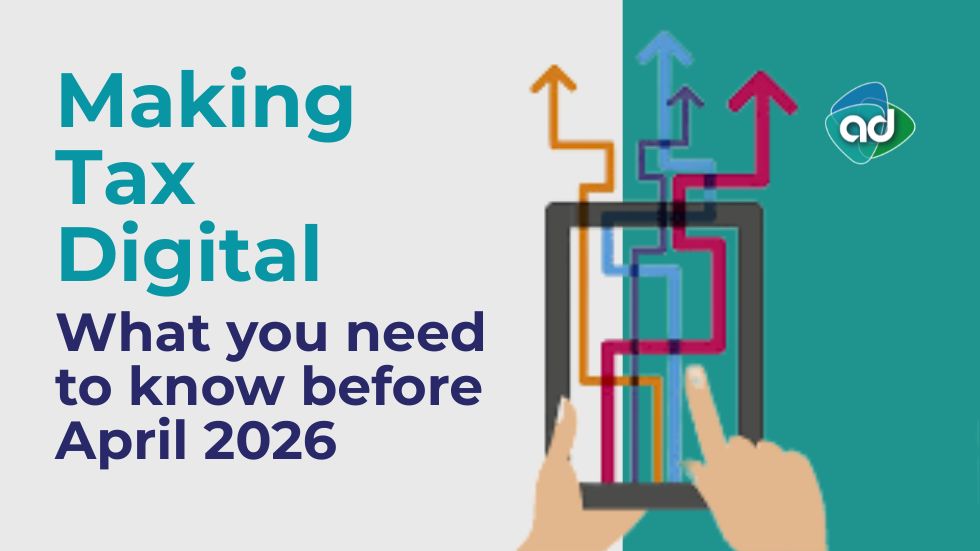If you’re self-employed or earn income from property, big changes are coming your way. From 6th April 2026, you’ll need to follow new rules under Making Tax Digital for Income Tax Self Assessment (MTD for ITSA) – and it’s not something you’ll want to leave till the last minute.
What is Making Tax Digital?
Making Tax Digital (MTD) is HMRC’s move to modernise how tax is reported. Instead of sending one tax return each year, you’ll need to:
- Keep digital records
- Submit quarterly updates to HMRC
- File a final end-of-year return – all via MTD-compliant software
It’s meant to make tax simpler and more accurate, but it does bring in more admin and tech requirements – especially if you’re not already using digital systems.
Who’s Affected and When?
MTD for ITSA is being phased in based on income from self-employment or property (before expenses):
- From April 2026: If your income from these sources is over £50,000
- From April 2027: Income between £30,000–£50,000
- From April 2028: Income between £20,000–£30,000 (still under review)
If you fall under these brackets, you’ll need to comply. And this is based on your 2024–25 income, so it’s worth checking now.
How to Get Set Up – 5 Simple Steps
Here’s a plain-English breakdown of what you’ll need to do:
1. Check Your Income
Add up your total self-employed and/or property income. If it’s over £50,000 for the 2024–25 tax year, MTD applies to you from April 2026.
2. Get the Right Software
You’ll need MTD-approved software to:
- Keep digital records
- Send quarterly updates
- File your year-end summary
There are free and paid options out there – we can help find what’s right for you.
3. Sign Up for MTD
You or your accountant can register for MTD through HMRC’s online service. If you’re working with us, we’ll handle that bit for you.
4. Start Keeping Digital Records
Your records must include:
- Amount, date, and category of each income/expense item
- Separate tracking for each business or property income stream
You can use software, spreadsheets with add-ons, or API-connected tools, as long as it’s digital and up to HMRC standards.
5. Send Updates & Final Return
Each quarter, you’ll send a digital summary of your income and expenses. At the end of the tax year, you’ll finalise everything and submit your digital tax return by 31st January.
What If You Miss an Update?
MTD brings in a new points-based penalty system. Miss a quarterly update? You get a point. Hit the limit? You’re fined. Good news: signing up early gives you time to practise without financial penalties.
Why You Should Act Now
HMRC phone lines are busy, and wait times are long. The earlier you get set up, the more confident you’ll feel. You’ll avoid the last-minute rush, late penalties, and any confusion over deadlines or data.
We’re Here to Help
MTD might sound daunting, but it doesn’t have to be. At Accounts Direct, we handle the whole lot:
- Help you choose the right software
- Keep your digital records up to scratch
- Submit all updates and returns for you
All you have to do is send us your receipts and invoices – we’ll take it from there.
📞 Want peace of mind before the 2026 deadline hits? Get in touch today and we’ll help you make the switch to MTD, stress-free.

